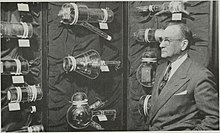9:01 AM
9:19 AM
10:08 AM
1 hour later…
11:19 AM
0
I had a chance to try VueScan, basically it's a third-party software that supports a lot of scanners and allow you to scan with a load of options, tons more than normally available even on the best proprietary driver.
This way if the scanner is supported in the list even if it's cheap and have a...
2 hours later…
1:31 PM

Mariner 10 was an American robotic space probe launched by NASA on November 3, 1973, to fly by the planets Mercury and Venus.
Mariner 10 was launched approximately two years after Mariner 9 and was the last spacecraft in the Mariner program. (Mariner 11 and 12 were allocated to the Voyager program and redesignated Voyager 1 and Voyager 2.)
The mission objectives were to measure Mercury's environment, atmosphere, surface, and body characteristics and to make similar investigations of Venus. Secondary objectives were to perform experiments in the interplanetary medium and to obtain experience with...

The video camera tube was a type of cathode ray tube used to capture the television image prior to the introduction of charge-coupled devices (CCDs) in the 1970s. Several different types of tubes were in use from the early 1930s to the 1980s.
In these tubes, the cathode ray was scanned across an image of the scene to be broadcast. The resultant current was dependent on the brightness of the image on the target. The size of the striking ray was tiny compared to the size of the target, allowing 483 horizontal scan lines per image in the NTSC format, or 576 lines in PAL.
== Cathode ray tube ==
Any...
sounds like basically they used a bunch of photo accumulators that would build up a charge when hit by light and then released the charges by scanning it with a CRT (an electron beam that would hit each accumulator in series), they then used the output signal from that through an amplifier as the video signal
« first day (2232 days earlier) ← previous day next day → last day (2728 days later) »
